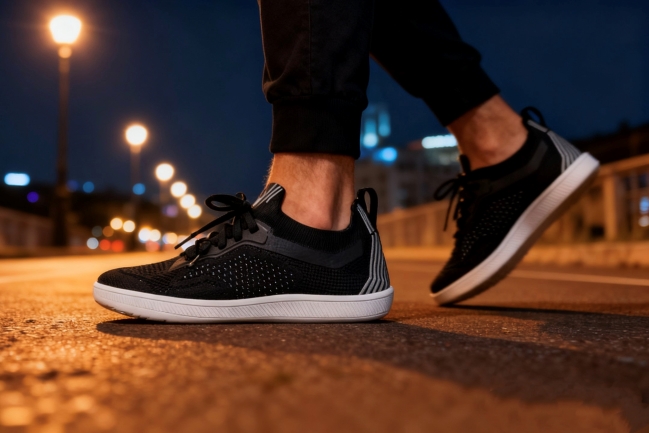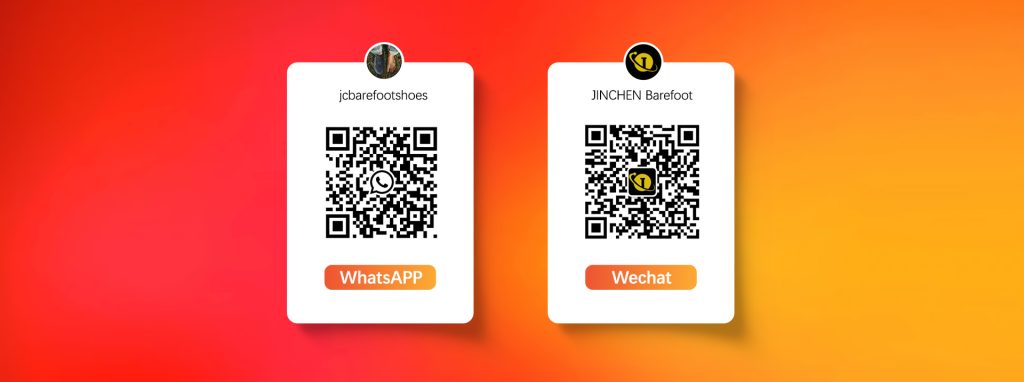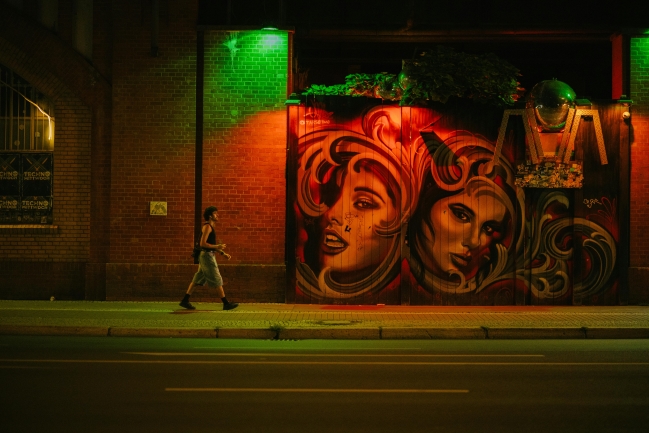On summer nights, the cool air and vibrant street atmosphere have led more and more people to choose night runs and city walks after work or dinner. Compared with the intense heat and hustle and bustle of the day, exercising at night is more relaxing and quiet, and it can also effectively help relieve stress. Meanwhile, barefoot shoes are becoming the ideal partner for this form of exercise. It not only offers a light and natural gait, but also helps the body recover and enhance its perception during night running.
Why Are Nighttime City Walking and Running Becoming Increasingly Popular
Night running has become a part of a healthy urban lifestyle. According to the 2024 annual report of Running USA, more than 30% of urban runners indicated that they prefer to exercise in the evening or at night. The main reasons for night running include:
The temperature is more suitable: The average temperature at night in summer is about 5 to 10 degrees Celsius lower than that during the day, reducing the risk of heatstroke.
Less traffic and crowds: Urban roads are quieter and the exercise process is more relaxing.
Mental health benefits: A study published in the Journal of Environmental Psychology shows that taking a walk at night can significantly reduce anxiety levels and improve sleep quality.
Night running has gradually evolved from a “niche habit of running enthusiasts” to a new trend in urban sports during summer.
How Barefoot Shoes Enhance the Nighttime Walking Experience
Traditional sports shoes often rely on thick soles and strong support structures, but this is not the best choice for urban walking at night. Barefoot shoes, with their minimalist design and lightweight soles, offer several unique advantages
Enhance ground perception
The soles of barefoot shoes are usually 3 to 6 millimeters thick, allowing the feet to directly sense the slightest changes on the ground. Research has found that this feedback helps improve balance and gait stability, especially in low-light night environments.
Reduce fatigue
Experimental data published in “Frontiers in Sports and Active Living” indicate that prolonged use of lightweight footwear for walking or jogging can significantly reduce the muscle load on the lower legs and hips.
Maintain a natural gait
Thick-soled shoes often make runners stride longer and have a stronger impact force. Barefoot shoes help restore the way the forefoot or midfoot lands, naturally distributing the impact force and making them more suitable for continuous night running.

The Risks and Safety Solutions of Walking at Night
Although urban walking and night running at night offer a comfortable experience, there are indeed some objective risks. If these issues are ignored, it may affect safety and sports performance.
Insufficient vision
The dim light at night can easily cause unsteady steps or missing details on the road surface. According to statistics from the National Highway Traffic Safety Administration (NHTSA) of the United States, over 75% of pedestrian accidents occur during periods of insufficient light. This indicates that extra attention must be paid to visibility when walking at night.
Solution: Choose Shoes with reflective designs, such as Xero Shoes HFS II, and pair them with reflective ankle bands or headlamps to increase the chances of being noticed by vehicles and passers-by.
Road debris and potential obstacles
There may be broken glass, small stones, branches and other debris on urban roads, which are especially difficult to be noticed in dim environments. Although barefoot shoes have thin soles, high-quality styles usually incorporate puncture-resistant materials. For example, the Vivobarefoot Primus Trail Knit FG has a sole design that takes into account both ground perception and protection.
Solution:
Try to choose well-maintained blocks or park routes.
Use barefoot shoes with anti-slip soles and puncture resistance layers.
Dampness and slip risk
Summer nights are often accompanied by dew or sudden rain, and the slippery road surface poses a challenge to runners. Research shows that on wet roads, barefoot shoes can provide faster feedback than regular running shoes, allowing the body to adjust its gait in a timely manner, but only if the soles have sufficient grip.
Solution: Select models with obvious grip patterns, such as Merrell Vapor Glove 6, which performs stably on slippery roads.
Adaptation period risk
Adaptation period risk
If you start running at night in barefoot shoes, the muscles in your feet and calves may become sore due to the increased load. Increasing the amount of exercise too quickly may lead to arch or Achilles tendon strains.
Solution:
Start with a 10 – to 15-minute leisurely walk and gradually transition to long night runs.
Give your body 2 to 3 weeks to adapt and allow the foot muscles to gradually strengthen.
Barefoot shoe models selection
| Model | Features | Night-time Advantages | Notes | Price Range (USD) |
| Merrell Vapor Glove 6 | Vibram outsole, approx. 6mm stack height, zero drop | Strong ground feel, lightweight, ideal for short walks | Very thin sole, caution needed on debris or slippery surfaces | $90–$120 |
| Vivobarefoot Primus Trail III All Weather FG | Weather-resistant upper + shallow lugs | Excellent grip, suitable for wet or dewy environments | Heavier and more expensive | $180–$210 |
| Vivobarefoot Primus Lite Knit | Breathable knit upper | Cool and lightweight for summer nights | Lower protection, choose safer routes | $160–$190 |
| Topo Athletic ST-5 | Transitional minimalist shoe | Provides moderate protection, good for beginners | Less ground feel compared to ultra-thin shoes | $100–$120 |
| Vibram FiveFingers (e.g., KSO series) | Toe-separated design, maximum freedom | Unique experience on flat surfaces | Lowest protection, not suitable for complex terrains | $100–$125 |
Real and Visible Health Benefits
In the barefoot shoe community and research, there is an increasing amount of data proving its health value:
Improving foot strength: A research team from Harvard University found that participants who consistently used barefoot shoes for six months saw an average 60% increase in the strength of their intrinsic muscle groups in their feet.
Reducing knee pressure: A study published in Medicine & Science in Sports & Exercise shows that the knee impact force of barefoot runners is about 12% lower than that of those wearing traditional running shoes.
Promoting nerve recovery: Experiments conducted by the University of Liverpool found that barefoot shoes can enhance the response speed of the nerves in the soles of the feet to ground stimuli, significantly improving the “dullness of the soles” caused by long-term wearing of thick-soled shoes.
How to Start Your Barefoot Night Journey
If you want to try barefoot night running or walking on summer nights, you can follow the following suggestions
Slow transition: Start with short walks, each lasting 10 to 15 minutes, and gradually increase the duration.
Choose a safe route: Give priority to clean and well-lit streets or parks.
Pay attention to body signals: Soreness and swelling in the calves or arches of the feet is a normal adaptation process, but if severe pain occurs, you should pause.
Reasonable equipment matching: Besides shoes, night running can also be accompanied by reflective vests or headlamps to enhance safety.
Conclusion
The summer night running craze is making a comeback, and barefoot shoes are undoubtedly the ideal companion for it. It not only brings you closer to nature and allows you to feel the ground feedback, but also helps improve your body structure and athletic performance. If you are looking for a summer night exercise that combines health and a sense of freedom, you might as well try starting your night running journey with barefoot shoes.
📩 Get in Touch
👉 Ready for Your Next Night Run?
- 📧 Email: barefoot@jinchenshoes.com
- 📱 Phone / WhatsApp: +86 199 3076 5088
- 🌍 Website: www.jinchenshoes.com




